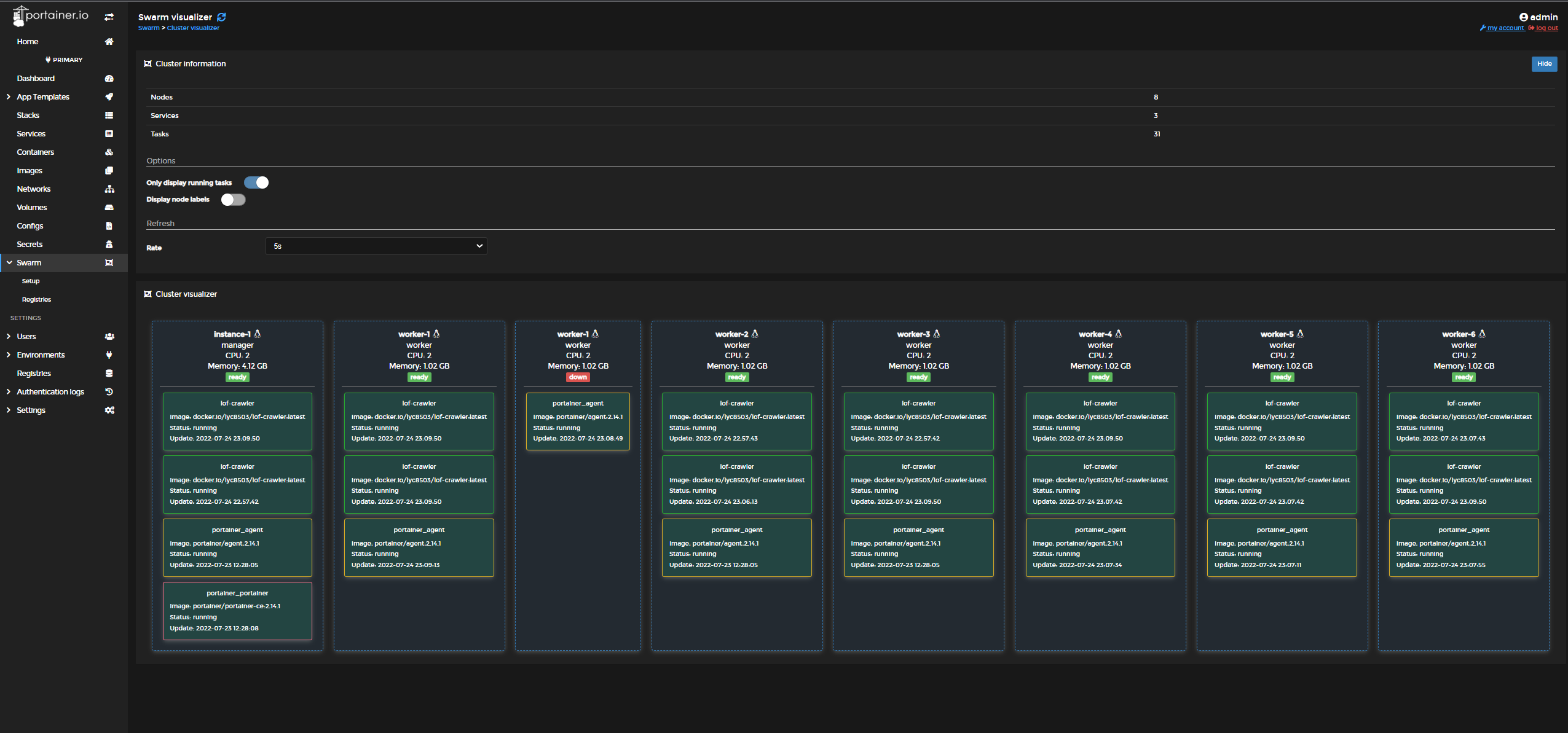tslistcrawler dc, a term suggestive of a network scanning or enumeration tool, presents a fascinating case study in network security. This exploration delves into its potential functionality, associated threats, and defensive strategies. We will examine its hypothetical architecture, data formats, exploited protocols, and potential malicious uses, providing a comprehensive understanding of its implications.
Understanding “tslistcrawler dc” requires a multifaceted approach. We will analyze its potential components and their roles in network reconnaissance and exploitation. This includes exploring the data it might process, the vulnerabilities it could target, and the mitigation techniques available to defend against its malicious use. We will also consider the legal and ethical ramifications of such a tool, ensuring responsible discussion of its capabilities and potential misuse.
Understanding “tslistcrawler dc”
The term “tslistcrawler dc” likely refers to a tool or technique used for network reconnaissance and enumeration, specifically targeting a domain controller (“dc”). It suggests a method for crawling and extracting information from a target’s Time Service (TS) list, potentially revealing valuable details about the network’s infrastructure and security posture. While not a publicly known, widely documented tool, the components and implications can be inferred from its name and common network security practices.
Potential Components and Functions of “tslistcrawler dc”
The name suggests the tool combines several functionalities. “tslist” likely refers to the network time protocol (NTP) server list maintained by a domain controller. This list contains information about time servers used for synchronization within the domain. “crawler” indicates that the tool systematically scans and extracts data from this list. Finally, “dc” explicitly targets domain controllers, implying a focus on Active Directory environments.
The tool’s function would be to gather information from the NTP server list on a domain controller, potentially including IP addresses, hostnames, and potentially other network configuration details exposed through the time service. This information could then be used for further reconnaissance or attack.
For descriptions on additional topics like aldi weekly ad westminster md, please visit the available aldi weekly ad westminster md.
Potential Threats Associated with “tslistcrawler dc”
A tool like “tslistcrawler dc” presents several potential security threats. The information gathered could be used to map the network, identify vulnerable systems, and launch targeted attacks. For instance, obtaining IP addresses of domain controllers allows attackers to directly target these critical systems with further attacks, such as exploiting vulnerabilities or launching brute-force password attacks. The information could also be used for lateral movement within the network after an initial compromise.
Exposure of other network devices through the NTP list might lead to further reconnaissance and attacks against those systems as well. In essence, the information gathered by such a tool could provide a strong foundation for more sophisticated attacks.
Comparison to Other Network Scanning Tools
“tslistcrawler dc” is conceptually similar to other network scanning and enumeration tools but focuses on a specific data source. Tools like Nmap and Nessus perform broad scans to identify open ports and vulnerabilities. However, “tslistcrawler dc” focuses its efforts on extracting information specifically from the NTP server list of domain controllers, which is a more targeted approach. Tools like BloodHound focus on Active Directory relationships, but “tslistcrawler dc” might be used as a preliminary step to gather initial information before employing more sophisticated tools for further exploitation.
It represents a more niche reconnaissance technique leveraging an often overlooked data source within the domain controller’s configuration.
Defensive Measures Against “tslistcrawler dc”

Protecting systems from tools like “tslistcrawler dc” requires a multi-layered approach focusing on preventing unauthorized access and detecting malicious activity. This involves strengthening system security, implementing robust network monitoring, and utilizing intrusion detection and prevention systems. A proactive and layered security strategy is crucial to minimize the risk of successful exploitation.
Effective defense against tools like “tslistcrawler dc” hinges on a combination of proactive security measures and reactive monitoring capabilities. By strengthening system security, implementing robust network monitoring, and utilizing intrusion detection and prevention systems, organizations can significantly reduce their vulnerability to such threats.
Network Security Tools and Techniques
The detection and mitigation of “tslistcrawler dc” activity can be significantly improved through the strategic deployment of various network security tools and techniques. These tools provide crucial visibility into network traffic and system behavior, allowing for the early identification and response to malicious activities.
- Intrusion Detection/Prevention Systems (IDS/IPS): IDS/IPS systems analyze network traffic and system logs for suspicious patterns indicative of malicious activity, such as unauthorized access attempts or unusual data transfer volumes. They can be configured to detect and block known attack signatures associated with tools like “tslistcrawler dc” or to identify anomalous behavior. An example of a signature might be a large number of connection attempts originating from a single IP address targeting specific ports known to be used by the target service.
- Network Firewall: A well-configured firewall acts as the first line of defense, filtering network traffic based on predefined rules. By blocking unauthorized access attempts to vulnerable ports, a firewall can prevent “tslistcrawler dc” from establishing a connection to the target system. For instance, restricting access to ports commonly used by the target service (e.g., port 22 for SSH) from untrusted IP addresses would effectively mitigate a significant threat vector.
- Security Information and Event Management (SIEM): SIEM systems collect and analyze security logs from various sources, providing a centralized view of security events across the network. They can be configured to alert administrators to suspicious activities, such as unusual login attempts or unauthorized access to sensitive data. The correlation of events from multiple sources enables faster identification of potential attacks.
- Network Monitoring Tools: Tools like Wireshark or tcpdump allow for detailed analysis of network traffic, enabling security analysts to identify and investigate suspicious connections. This deep packet inspection can reveal the specific commands and data exchanged during an attack, aiding in the identification of the malicious tool and its methods.
Hardening a Server Against Exploitation
Hardening a server involves implementing a series of security measures to reduce its vulnerability to attacks. A systematic approach, focusing on both the operating system and applications, is crucial for effective protection.
- Regular Software Updates: Keeping the operating system and all installed applications up-to-date with the latest security patches is paramount. These patches often address known vulnerabilities that could be exploited by tools like “tslistcrawler dc”.
- Strong Passwords and Authentication: Enforce strong password policies, including minimum length, complexity requirements, and regular password changes. Consider implementing multi-factor authentication (MFA) for enhanced security. This prevents unauthorized access, even if credentials are compromised.
- Principle of Least Privilege: Grant users and processes only the necessary permissions to perform their tasks. This limits the potential damage caused by a successful compromise. If a user account is compromised, the attacker’s access is restricted to the minimum permissions granted to that account.
- Regular Security Audits: Conduct regular security audits to identify and address potential vulnerabilities. This proactive approach helps to maintain a high level of security. These audits should cover system configurations, access controls, and application security.
- Disable Unnecessary Services: Disable any unnecessary services or applications running on the server. This reduces the attack surface, minimizing the number of potential entry points for attackers. This reduces the potential for vulnerabilities that could be exploited.
Intrusion Detection/Prevention System Response
IDS/IPS systems can be configured to respond to activity associated with “tslistcrawler dc” in several ways. The specific response depends on the system’s configuration and the severity of the detected activity.
Upon detecting suspicious activity consistent with “tslistcrawler dc” behavior (e.g., numerous connection attempts to a specific port from a single IP address, or unusual data transfer patterns), an IDS might generate an alert, notifying the security administrator of the potential threat. An IPS, on the other hand, would not only generate an alert but also take active steps to mitigate the threat, such as blocking the malicious IP address or resetting the connection.
This proactive approach can prevent the attack from succeeding.
Illustrative Scenarios

Understanding the practical applications and potential misuse of “tslistcrawler dc” requires examining specific scenarios. The following examples illustrate its use in both ethical penetration testing and malicious attacks. These scenarios are hypothetical but reflect realistic possibilities.
Penetration Testing Scenario, Tslistcrawler dc
This scenario details a penetration test using “tslistcrawler dc” to identify vulnerable domain controllers within a simulated corporate network. The goal is to assess the organization’s security posture regarding domain controller exposure.
The penetration tester first establishes a secure, isolated testing environment mirroring the target network’s structure. This includes setting up virtual machines representing domain controllers and other network devices.
Next, the “tslistcrawler dc” tool is deployed against the simulated domain controllers. The tool scans for open ports associated with vulnerable services, specifically focusing on those that could be exploited to gain unauthorized access. The output provides a list of potentially vulnerable domain controllers and the specific services exposed.
Based on the results, the penetration tester prioritizes targets for further investigation. This involves attempting to exploit the identified vulnerabilities, such as using known exploits against weak credentials or misconfigurations. The penetration test concludes with a comprehensive report detailing the discovered vulnerabilities and recommendations for remediation. No actual data is compromised, and all actions are conducted within the confines of the agreed-upon testing scope.
Malicious Attack Scenario
This scenario depicts a hypothetical attack leveraging “tslistcrawler dc” for malicious purposes. The attacker’s objective is to compromise a target organization’s domain controllers for data exfiltration and potential ransomware deployment.
The attacker initially uses “tslistcrawler dc” to scan the target organization’s network, identifying potential vulnerabilities in their domain controllers. This involves scanning for exposed ports and services known to be susceptible to exploitation.
Upon identifying vulnerable domain controllers, the attacker deploys various techniques to gain unauthorized access. This might include exploiting known vulnerabilities, leveraging weak passwords, or using social engineering tactics to obtain credentials. Successful exploitation grants the attacker access to the domain controller.
Once inside, the attacker can perform several malicious actions, such as stealing sensitive data, deploying ransomware to encrypt critical systems, or gaining control of other systems within the network. The impact could range from data breaches and financial losses to operational disruptions and reputational damage.
Network Traffic Analysis
Analyzing network traffic associated with “tslistcrawler dc” activity reveals specific patterns. The tool’s activity primarily involves TCP SYN scans targeting specific ports associated with domain controllers.
The packet headers would contain the source and destination IP addresses, port numbers (typically port 389 for LDAP, port 53 for DNS, and other relevant ports), and TCP flags indicating the SYN scan type. The payload data would be minimal, primarily containing the initial SYN packet request.
Successful responses from vulnerable domain controllers would be indicated by SYN-ACK packets, confirming the presence of the targeted services. Further communication, depending on the exploited vulnerability, might involve additional packets containing authentication attempts, data exfiltration, or command execution. Analyzing the packet headers and payload data helps security professionals identify and mitigate potential threats.
In conclusion, the hypothetical “tslistcrawler dc” tool highlights the ever-evolving landscape of network security threats. By understanding its potential capabilities and vulnerabilities, we can develop robust defensive strategies and promote ethical considerations in the development and use of such technologies. Proactive security measures, coupled with a strong understanding of legal and ethical implications, are crucial in mitigating the risks associated with sophisticated network scanning tools.



